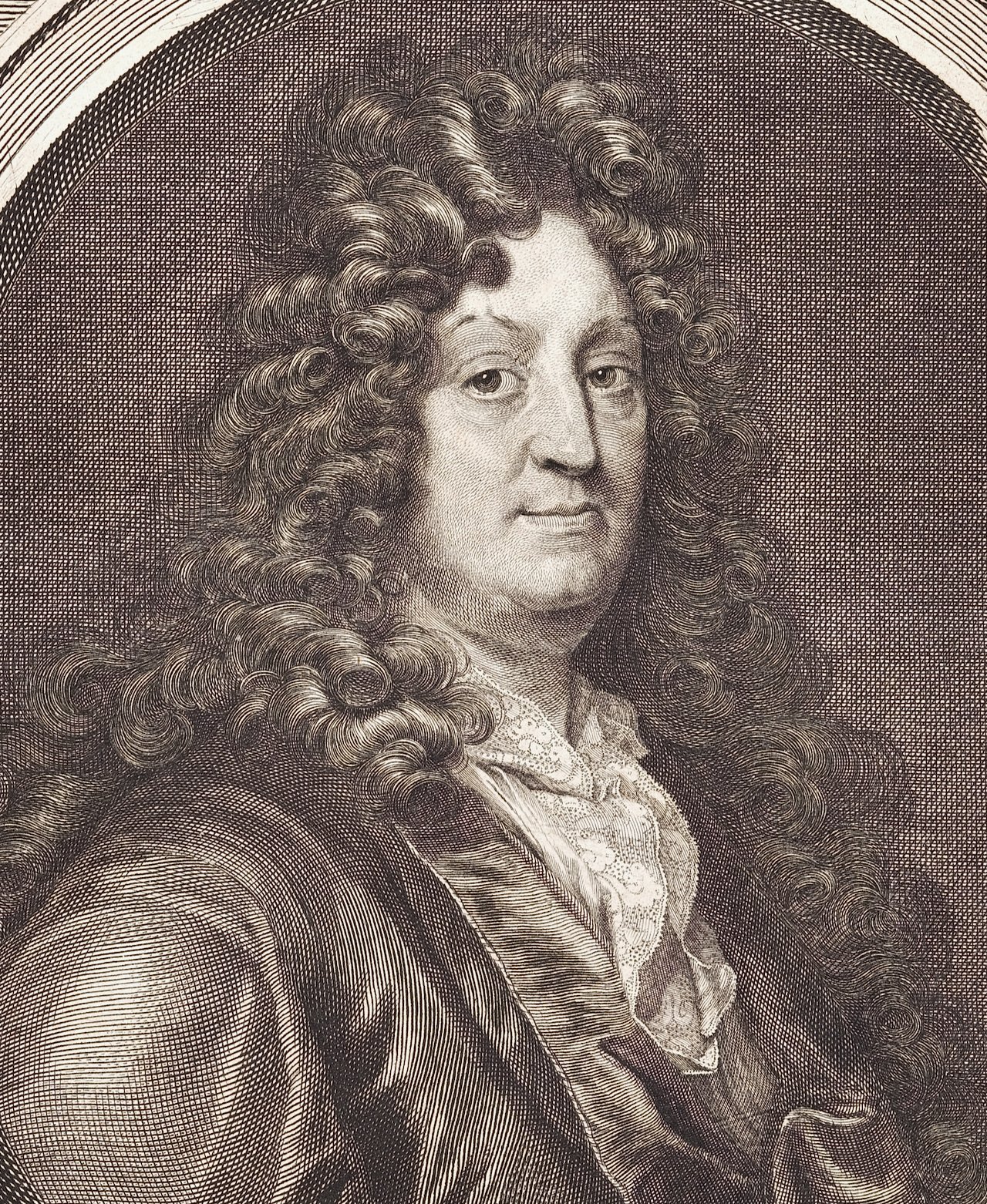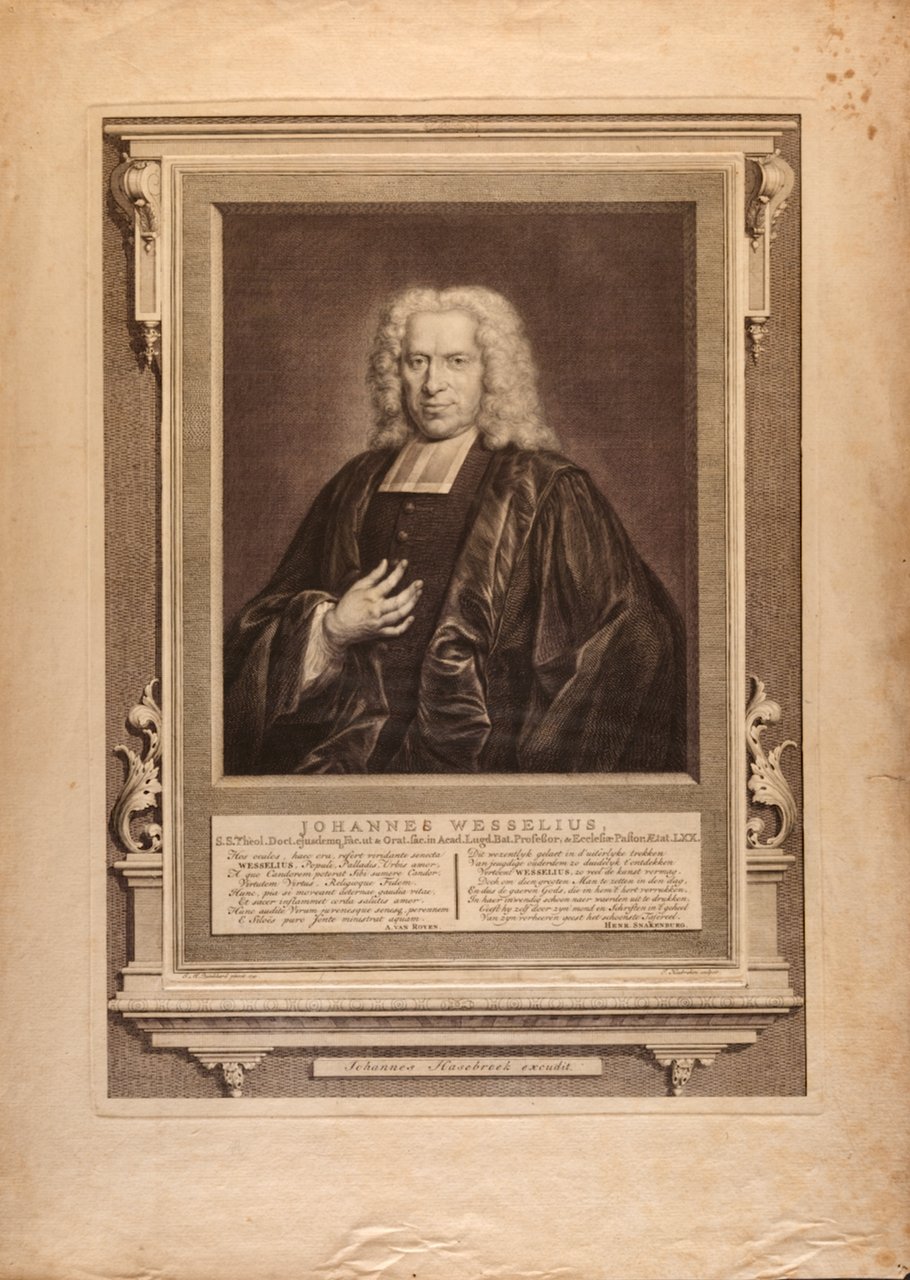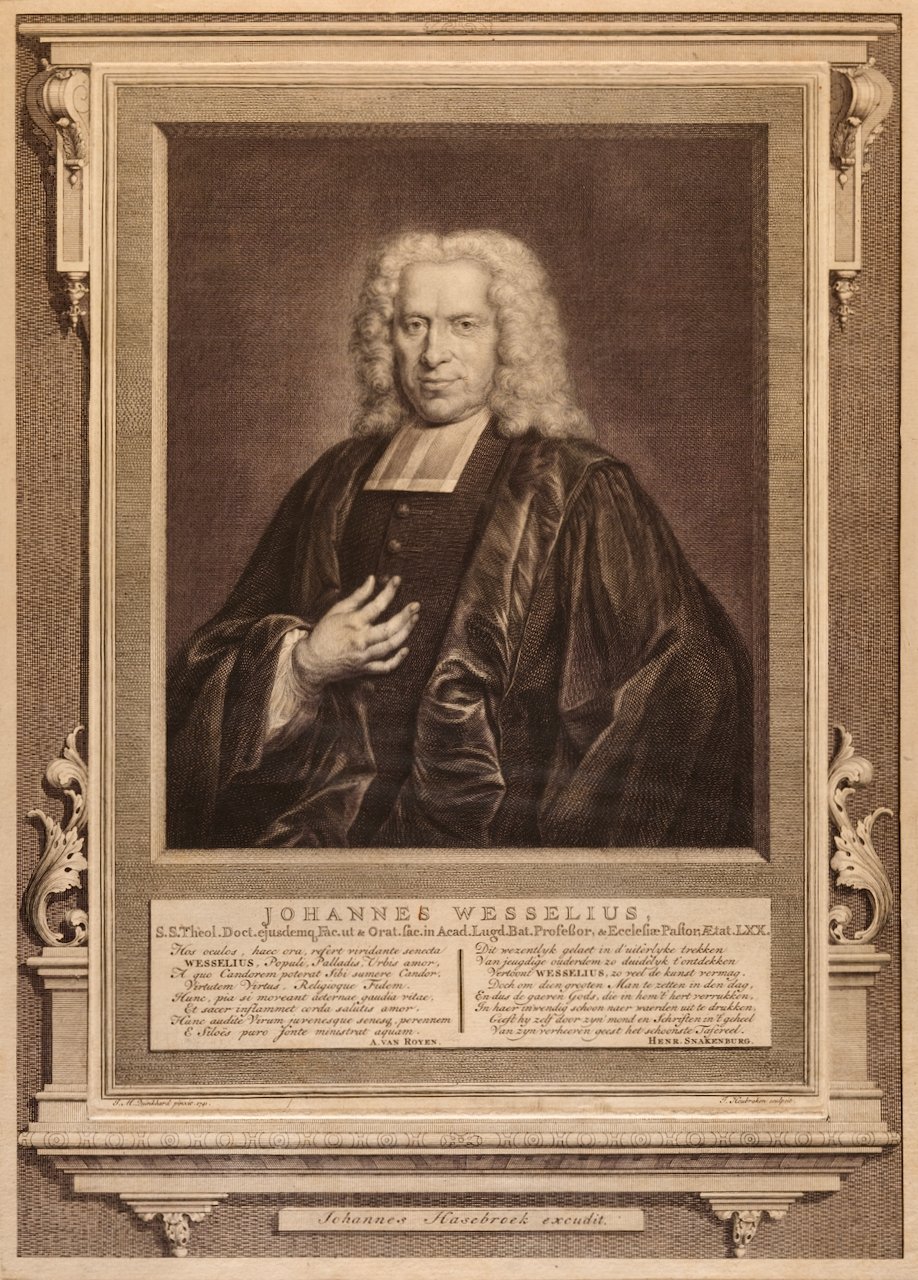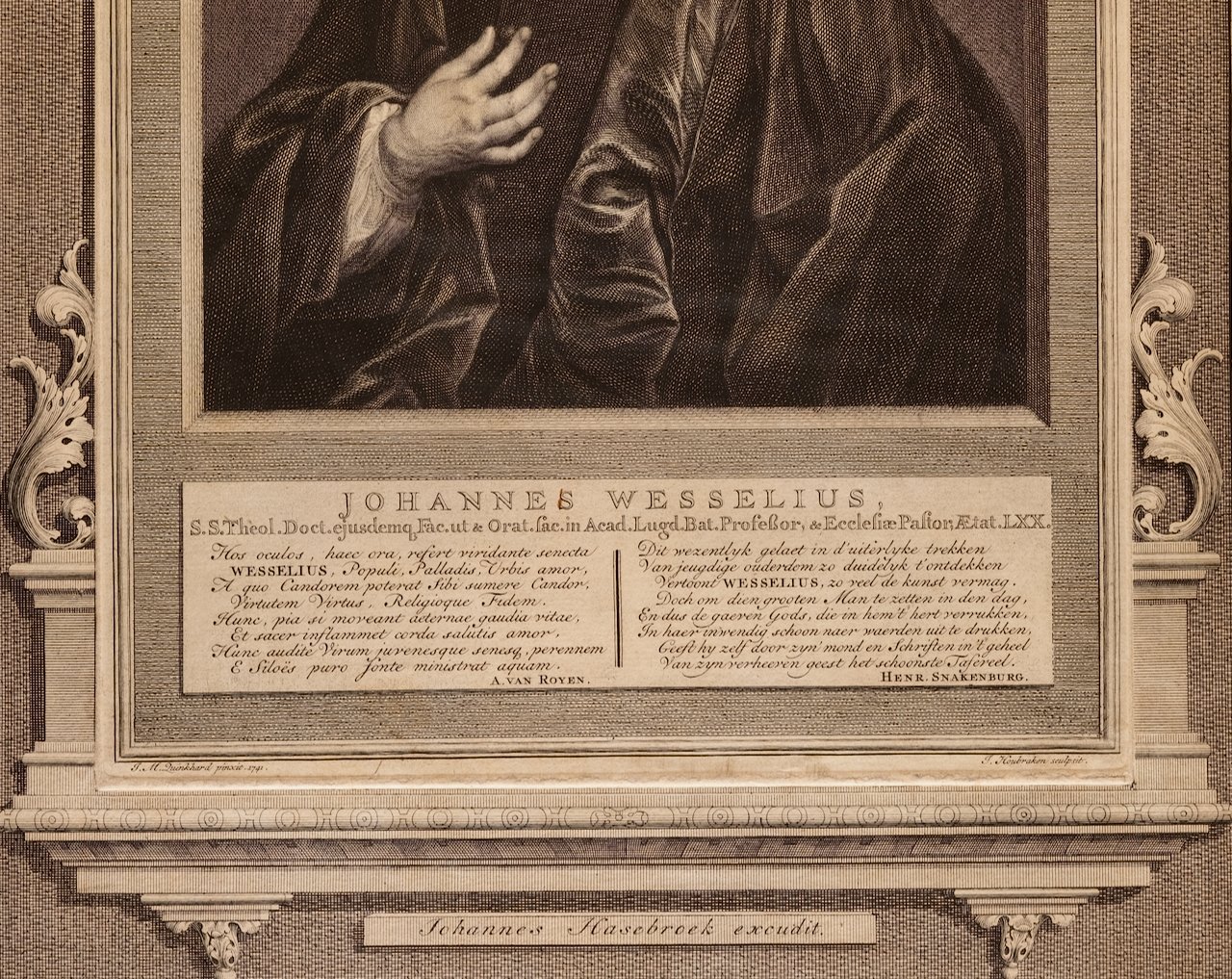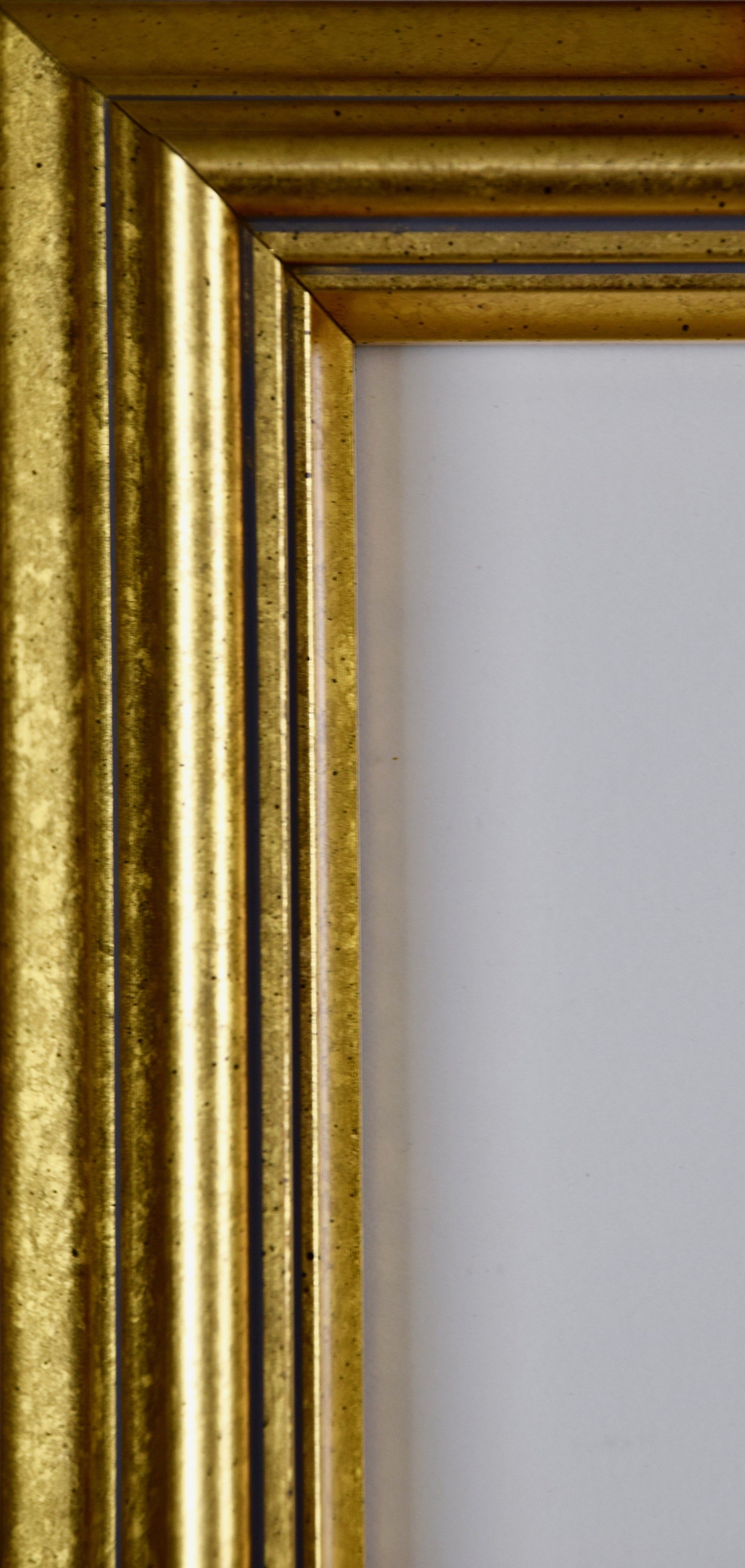Jean Racine Portrait: 17th C. Engraving by Edelinck in Perrault's Les Hommes
This is a 17th century portrait engraving of Jean-Baptiste Racine by Gerard Edelinck (1640-1707), published in Charles Perrault's 'Les Hommes Illustres' in Paris in 1696. Jean Racine (1639-1699) was a French dramatist, one of the three great playwrights of 17th-century France, along with Molière and Corneille. Racine's works were primarily tragedies. He wrote Phèdre, Andromaque, and Athalie. He did write one comedy, Les Plaideurs, and a muted tragedy, Esther for young readers. His writing is renowned for its elegance, purity, speed, and fury. The American poet Robert Lowell described his style as a "diamond-edge" and the "glory of its hard, electric rage". Racine's works often displayed his psychological insight, the passion of his characters, and the stark reality of his plots and stage descriptions. In 1672, he was elected to the Académie Française, and two years later he achieved the title of "treasurer of France", and later the honorary title of an "ordinary gentleman of the king" to King Louis XIV, and subsequently a secretary of the king .
Creator: Gerard Edelinck (1640 - 1707, Flemish)
Creation Year: 1696
Dimensions: Height: 17.13 in (43.52 cm)
Width: 10.75 in (27.31 cm)
Medium: Engraving
Condition: See description below.
This is a 17th century portrait engraving of Jean-Baptiste Racine by Gerard Edelinck (1640-1707), published in Charles Perrault's 'Les Hommes Illustres' in Paris in 1696. Jean Racine (1639-1699) was a French dramatist, one of the three great playwrights of 17th-century France, along with Molière and Corneille. Racine's works were primarily tragedies. He wrote Phèdre, Andromaque, and Athalie. He did write one comedy, Les Plaideurs, and a muted tragedy, Esther for young readers. His writing is renowned for its elegance, purity, speed, and fury. The American poet Robert Lowell described his style as a "diamond-edge" and the "glory of its hard, electric rage". Racine's works often displayed his psychological insight, the passion of his characters, and the stark reality of his plots and stage descriptions. In 1672, he was elected to the Académie Française, and two years later he achieved the title of "treasurer of France", and later the honorary title of an "ordinary gentleman of the king" to King Louis XIV, and subsequently a secretary of the king .
Creator: Gerard Edelinck (1640 - 1707, Flemish)
Creation Year: 1696
Dimensions: Height: 17.13 in (43.52 cm)
Width: 10.75 in (27.31 cm)
Medium: Engraving
Condition: See description below.
This is a 17th century portrait engraving of Jean-Baptiste Racine by Gerard Edelinck (1640-1707), published in Charles Perrault's 'Les Hommes Illustres' in Paris in 1696. Jean Racine (1639-1699) was a French dramatist, one of the three great playwrights of 17th-century France, along with Molière and Corneille. Racine's works were primarily tragedies. He wrote Phèdre, Andromaque, and Athalie. He did write one comedy, Les Plaideurs, and a muted tragedy, Esther for young readers. His writing is renowned for its elegance, purity, speed, and fury. The American poet Robert Lowell described his style as a "diamond-edge" and the "glory of its hard, electric rage". Racine's works often displayed his psychological insight, the passion of his characters, and the stark reality of his plots and stage descriptions. In 1672, he was elected to the Académie Française, and two years later he achieved the title of "treasurer of France", and later the honorary title of an "ordinary gentleman of the king" to King Louis XIV, and subsequently a secretary of the king .
Creator: Gerard Edelinck (1640 - 1707, Flemish)
Creation Year: 1696
Dimensions: Height: 17.13 in (43.52 cm)
Width: 10.75 in (27.31 cm)
Medium: Engraving
Condition: See description below.
This beautiful engraved portrait is printed on chain-linked, laid paper with wide margins. The sheet measures 17.13" high by 10.75" wide. There is a small spot in the lower margin and a few tiny faint spots in the margins, but the print is otherwise in very good condition. The original descriptive text pages, 81 & 82, are included.
Provenance: This engraving was owned by Arthur Pomeroy, 1st Baron Harberton and the Viscount Harberton (1723-1798). He was an Irish politician, who represented County Kildare in the Irish House of Commons and then the Irish House of Lords as Baron Harberton in the Peerage of Ireland. He was an ancestor of General George Colley (1835–81).
Charles Perrault (1628-1703) was a prolific and iconic French author and a member of the Académie Française. He was an influential figure in the 17th-century French literary scene, and was the leader of the Modern faction during the Quarrel of the Ancients and the Moderns. Perrault is credited with the establishment of the fairy tale as a new genre based on his book 'Histoires ou contes du temps passé' (Stories or Tales from Past Times), published in 1697. It was subtitled Tales of Mother Goose ("Les Contes de ma Mère l'Oye"). He wrote many now famous and beloved fairy tales, including: Little Red Riding Hood ("Le Petit Chaperon Rouge"), Cinderella ("Cendrillon"), Puss in Boots ("Le Maître chat ou le Chat botté"), Sleeping Beauty ("La Belle au bois dormant"), and Bluebeard ("Barbe Bleue"), which were based on earlier folk tales. Some of Perrault's versions of old stories influenced the German versions published by the Brothers Grimm more than 100 years later.
Perrault edited 'Les Hommes Illustres', which was published in Paris in 1696. It contains portraits of illustrious French men who died in the 17th century, including scientists, politicians, religious leaders, architects, artists and authors. These rare portraits were created by important old master engravers of the day, including Robert Nanteuil, Gérard Edelinck and Jacques Lubin. Each portrait is accompanied by descriptive text pages. The book contains a self-portrait of Nanteuil, as well as portraits of Antoine Arnauld, Blaise Pascal, Jean Racine, Cardinal Richelieu, St. Vincent de Paul, Jacques Callot, Rene Descartes, Francois Mansart, Jean Baptiste Moliere, Jean Baptiste Colbert and Charles Perrault himself. Blaise Pascal and Antoine Arnauld were later deleted by the censors, as the Jesuits complained about the inclusion of Jansenists. Threatened with blackmail by the Jesuits and afraid of losing his royal pension, Perrault capitulated and the suppressed leaves were eliminated in the second edition of the book. The interference caused a scandal among intellectuals. Racine purportedly wrote a now-lost poem about the incident.




